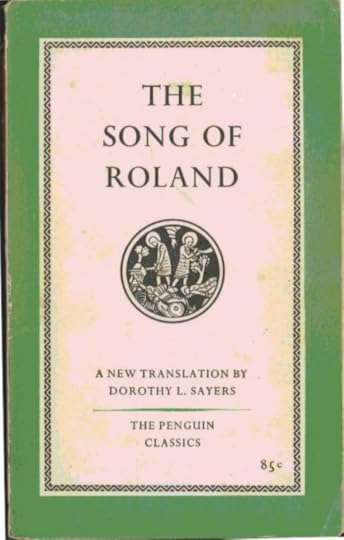the truth in view

One of the finest poems by the great Richard Wilbur is called “Lying.” Says Wilbur: When we make things up, when we claim to have seen a grackle (or some more numinous creature) when we didn’t really, this is a displaced “wish … to make or do.” But when we lie in this way we misunderstand our situation — misunderstand ourselves and our world:
In the strict sense, of course,
We invent nothing, merely bearing witness
To what each morning brings again to light:
Gold crosses, cornices, astonishment
Of panes, the turbine-vent which natural law
Spins on the grill-end of the diner’s roof,
Then grass and grackles or, at the end of town
In sheen-swept pastureland, the horse’s neck
Clothed with its usual thunder, and the stones
Beginning now to tug their shadows in
And track the air with glitter. All these things
Are there before us; there before we look
Or fail to look; there to be seen or not
By us, as by the bee’s twelve thousand eyes,
According to our means and purposes.
(Job 39:19, the LORD to Job: “Hast thou given the horse strength? hast thou clothed his neck with thunder?”) The key phrase is “All these things / Are there before us.” We must simply discover the will and the wisdom to recognize what is already present to us. “The arch-negator” — that is, Satan — manages only briefly and imperfectly to obscure the radiance of the world: In Eden he was but
… darkening with moody self-absorption
What, when he left it, lifted and, if seen
From the sun’s vantage, seethed with vaulting hues.
Here we might remember one of Wilbur’s earlier masterpieces, “The Undead,” in which he counsels us to recognize the condition of vampires: “Their pain is real, and requires our pity.” Because all they can do is “prey on life forever and not possess it, / As rock-hollows, tide after tide, / Glassily strand the sea.”
Wilbur says that have this desire to make or do, and in our “moody self-absorption” sate it with lies, when we could find what we seek if we look — really look.
Closer to making than the deftest fraud
Is seeing how the catbird’s tail was made
To counterpoise, on the mock-orange spray,
Its light, up-tilted spine; or, lighter still,
How the shucked tunic of an onion, brushed
To one side on a backlit chopping-board
And rocked by trifling currents, prints and prints
Its bright, ribbed shadow like a flapping sail.
Here let me direct you to the second chapter of Robert Farrar Capon’s wonderful book The Supper of the Lamb, in which he teaches you how to look at an onion. But back to Wilbur.
Simply making a simile is a way of seeing — or perhaps the making of a simile is a natural product of seeing. And even the the smallest simile, Wilbur says, is “tributary / To the great lies told with the eyes half-shut / That have the truth in view.” I love that phrase, that way of describing our artful tales and tropes. It’s worthy of being placed alongside Sidney’s Defence of Poesy.
Our eyes are half-shut because we’re partly viewing the world and partly retreating within ourselves to find an a response to what we have already seen — to find what the poet Donald Davie called “articulate energy” — syntax adequate to the thing. Wilbur’s offers three examples of such great lie, and the third is this:
That matter of a baggage-train surprised
By a few Gascons in the Pyrenees
Which, having worked three centuries and more
In the dark caves of France, poured out at last
The blood of Roland, who to Charles his king
And to the dove that hatched the dove-tailed world
Was faithful unto death, and shamed the Devil.
(Re; shaming the devil: this is an old proverb, most famously used in Henry IV, Part I by Hotspur to Owen Glendower, who has been boasting of his power over sprits: “O, while you live, tell truth and shame the devil!”)
Wilbur is talking about The Song of Roland of course, and these words, coming at the end of the poem, tell us of two ways of shaming the devil: to be “faithful unto death” in one’s deeds and in one’s words.
That is my Thought for Today, but I want to add a postscript. For my biography of Dorothy L. Sayers, I have been reading her translation of The Song of Roland — the last work she completed in her life. She begins her long and remarkably helpful introduction to the poem by describing, quite flatly, a minor skirmish in the year 778, an ambush of the rear-guard of one of Charlemagne’s armies in the Pyrenees in which a few people were killed. A chronicler writing in 830 named some of them; another chronicler ten years later mentioned the skirmish but did not name the dead, since, he said, they had already been named.
So goes Sayers’s first paragraph. And when you read the second one you’ll see where Wilbur got his inspiration for the conclusion of his poem:
After this, the tale of Roncevaux appears to go underground for some two hundred years. When it again comes to the surface, it has undergone a transformation which might astonish us if we had not seen much the same thing happen to the tale of the wars of King Arthur. The magic of legend has been at work, and the small historic event has swollen to a vast epic of heroic proportions and strong idealogical significance. Charlemagne, who was 38 at the time of his expedition into Spain, has become a great hieratic figure, 200 years old, the snowy-bearded king, the sacred Emperor, the Champion of Christendom against the Saracens, the war-lord whose conquests extend throughout the civilised world. The expedition itself has become a major episode in the great conflict between Cross and Crescent, and the marauding Basques have been changed and magnified into an enormous army of many thousand Saracens. The names of Eggihardt and Anselm have disappeared from the rear-guard; Roland remains; he is now the Emperor’s nephew, the “right hand of his body”, the greatest warrior in the world, possessed of supernatural strength and powers and hero of innumerable marvellous exploits; and he is accompanied by his close companion Oliver, and by the other Ten Peers, a chosen band of superlatively valorous knights, the flower of French chivalry. The ambuscade which delivers them up to massacre is still the result of treachery on the Frankish side; but it now derives from a deep-laid plot between the Saracen king Marsilion and Count Ganelon, a noble of France, Roland’s own stepfather; and the whole object of the conspiracy is the destruction of Roland himself and the Peers. The establishment of this conspiracy is explained by Ganelon’s furious jealousy of his stepson, worked out with a sense of drama, a sense of character, and a psychological plausibility which, in its own kind, may sustain a comparison with the twisted malignancy of Iago. In short, beginning with a historical military disaster of a familiar kind and comparatively small importance, we have somehow in the course of two centuries achieved a masterpiece of epic drama – we have arrived at the Song of Roland.
That is, a “small historic event” has been magically transformed into one of “the great lies … that have the truth in view.” The idea of a simple story going “underground,” deep into the unconscious lives of a people, and then emerging as something altogether other and more resonant is the image that Wilbur, with his poet’s alertness, picks up from Sayers.

Alan Jacobs's Blog
- Alan Jacobs's profile
- 529 followers



